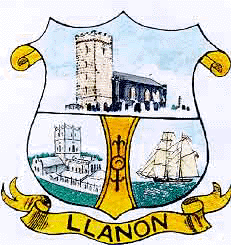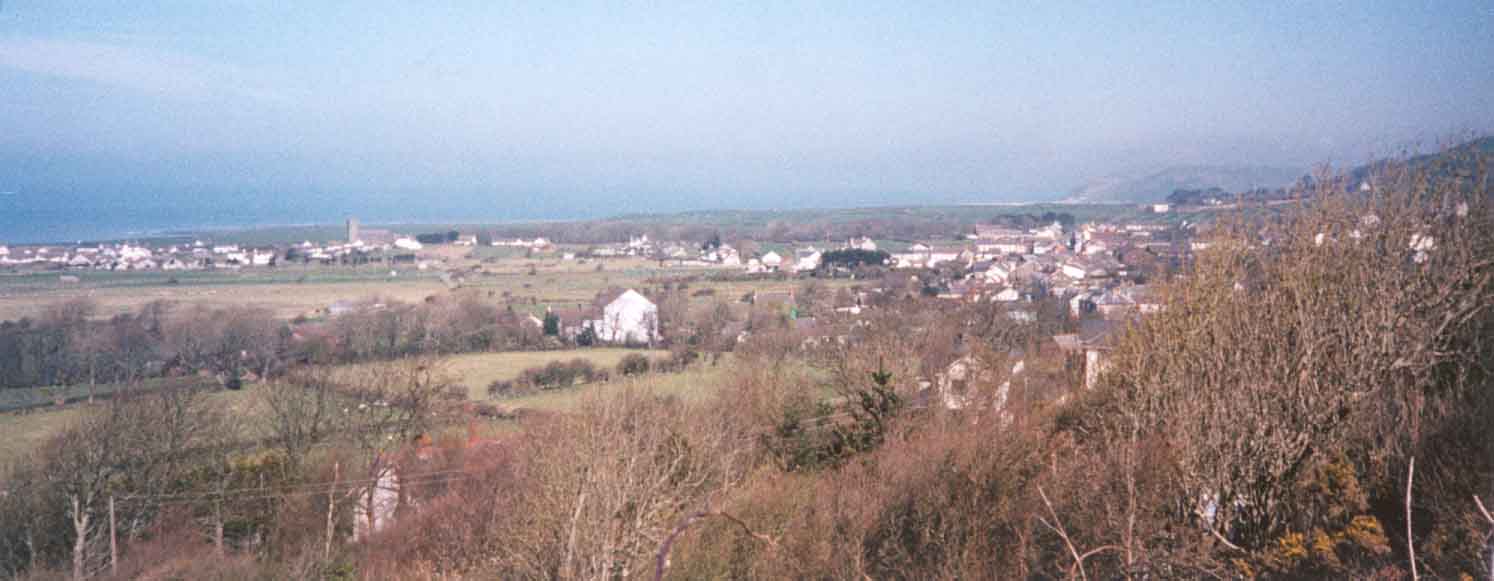|
The transfer of civil functions from the Vestry to Parish Councils was regarded as
an intrusion by the established authorities throughout Britain. Resistance to the
Local Government Bill was
finally defeated on 4th December 1894 when Parish Councils were created in
England and Wales. Prior to the 1894 Act, the squire, the parson and
the schoolmaster had generally dominated the power of the vestry. Many
parish councils began without the co-operation of the most influential and
highly educated people. In
Llansantffraed, the vicar, the schoolmaster and Major Hughes of Alltlwyd, all
showed a willingness to work with the new institution.
The "Act" proved popular amongst large
numbers of people. The new powers were taken
very seriously in the early days, particularly in Wales, where attachment to the
parish locality was strong and where large numbers of non conformists had
been disenfranchised. Competition for seats on the new councils was
fierce. In Hawarden, Flintshire, there were 90 candidates for 15 seats. In Troed-yr -aur, Cardiganshire, 18 candidates competed for 12 seats, the squire
failing but the rectors' coachman, a prominent Congregationalist, securing a
seat.
In Llansantffraed competition was very keen at
the Parish Meeting held in Llanon Board School on December 4th 1894. There
were 37 candidates for 13 seats. Major J C P Hughes, Alltlwyd, was to
chair the meeting and John Lloyd Hughes, also of Alltlwyd, was a
candidate. The total of 1,649 votes cast by show of hands for all
candidates at that first Parish Meeting was to prove more than the total for any
subsequent election at a Parish Meeting. The number of candidates never
again reached the 30 mark. At the end of the proceedings one of the candidates,
Lewis Lewis of Dugoed, exercised his right to demand a poll by secret ballot.
The results of the secret ballot were published
in the Cambrian News on 28th December 1894 and revealed that a total of 2336
votes were cast for 25 candidates. The cost to the parish was £7-12-6d
which was raised by the new council issuing a precept on the overseers.
Details of both polls can be seen in the appendix
It would be interesting to know why 13 candidates
withdrew from the contest. Did their enthusiasm wane away from the
excitement of the Parish Meeting? Had they been reluctant candidates at
that meeting? Were they in awe of the formal ballot system? Or were
there party political influences on their decision? The
verdict of the Cambrian News at the time was that "The contest turned
out a grand victory to the Liberals. Out of 11 Liberal candidates nine
were elected, while the Conservatives only returned four out of 13
candidates. The spare votes of the Liberals accounts for the high position
of the Conservatives."
At the first meeting of the newly elected Council
on 1st January 1895, the competitive spirit was still very much alive.
When John Davies abstained in the voting to elect a Chairman for the year, a 6-6
split of votes between Captain David Jones, Tynffynon and David Lloyd Morris,
Sunnyhill resulted. The provisional Chairman, John Thomas, was therefore
required to use his casting vote.
There was not so much competition over the role
of Clerk to the Council. After the clerkship had been refused by Captain
David Jones, no response was made to the Chairman's request for a volunteer.
"John Evans, assistant overseer, was appointed clerk without any
opposition."
Despite the watering down of the Local Government
Bill by over 800 amendments during its passage through Parliament, Parish
Councils still emerged with considerable powers. Llansantffraed Parish
Council seemed determined to use most of them from the start.
During its first 6 months, the Council appointed
overseers, reviewed rateable values, approved rating exemptions on the grounds
of poverty, issued precepts, agreed standing orders, required the vicar to
present the Vestry Book for inspection, challenged the presentation of the
School Board accounts, decided that members of the public should be permitted to
attend meetings and sought advice from the County on securities for the
Treasurer.
Great store was set on conducting business "According
to the Act". Statutory forms and a parish stamp were
purchased. A box was purchased in which to keep the "Act"
together with standing orders, parish chest, the stamp and, later, the parish
map. This was to be kept at Llanon Board School. The present whereabouts
of these items, so treasured at the time, is a mystery.
During its early days the Council discussed
whether the Parish should be warded, the time of day for holding the Poll, and
whether to ask the County Council to build a bridge over the Cledan above
Bryngwyn.
Problems of water supply were also tackled at an
early stage by calling for the water inspector to visit Llanon. The
decision to repair Llanon wells and pumps was taken, with Mary A Williams and
John Thomas being appointed to collect money from the villagers for the
purpose. It was resolved that the appointees should tell the villagers
that "if they are not willing to subscribe towards the repairing of
wells and pump, the result will be that they will be compelled to pay a
continual rate towards their supply of water."
This proved to be an unpopular move as at the
Parish Meeting held on 21st August 1895 a vote of censure was passed upon
members of the Parish Council "because they have not prepared an
abundance of water to meet the necessities of Llanon population."
The meeting urged the Council to take up the matter without delay
"in order to avoid any increase in the rates."
After eight months public expectations were still
very high. Councillors were faced with the familiar and recurring problem
of being expected to provide an abundant water supply that no one was willing to
pay for. A jotting on the cover of a minute book, albeit from a later
period, illustrates the tension created by the gap between expectation and
performance. "The impossible I do
immediately. Miracles take a little longer."
The issue of water supply "Dwfr" continued
to dominate the agenda for the next forty years. The Parish Council's
accounts for the year ending 31st March 1925 have a total of 27 expenditure
items, 23 of which relate to the repair of pumps and wells. Suddenly in
1936/7 there was no expenditure on water supply. In fact no meetings were
held at all.
For a time it must have seemed that with the
arrival of mains water the Council's job was done. The accounts for 1937/8
show payments for filling, capping or dismantling wells and pumps.
However, the receipt of one pound ground rent from the Cambrian Electricity
Company recorded in January 1938 hints at the nature of agenda items to come.
In November 1895 the Council received its first
petition from villagers. It called for the removal of barbed wire from the
sides of the path from Llansantffraed to Llanon Chapel. The Council,
possibly still feeling the sting of the vote of censure in August, decided to
call a Parish Meeting. This meeting gave a clear message to the Council
that the barbed wire was a nuisance and that the Council should issue removal
notices and take proceedings under the Barbed Wire Act 1893 in the event of
default after one month.
Towards the end of the year the Council entered
its first dispute with Aberaeron Rural District Council over the status of what
is now known as Brynadsain path. The Parish Council claimed it did not
have the power to repair it, as it was not a path but a "road 90 yards
long and 9 feet wide leading from Llanon Village to Mount well and Schoolhouse
is not applicable as a footpath under section 13.2 of the Act."
Aberaeron RDC would not accept responsibility for
its maintenance but eventually agreed to consider adopting it as a road if the
Parish Council would first put it in good repair. Councillors decided to
repair it themselves, requesting contributions towards the cost from
inhabitants.
There were 27 candidates in the election at the
Parish Meeting in 1896. Following a vote by show of hands, a poll was
again demanded. Seven members of the first Council were re-elected.
One of the first decisions of the new Council was
to record the minutes in Welsh. It was also this Council which set in
motion the acquisition of Waun Trobwll for a market hall and playground to mark
the occasion of Queen Victoria's Jubilee. This decision earned a vote of
thanks at the Parish Meeting in February 1898 after the deeds had been read and
explained by David Lewis, the vicar, and Thomas R Davies, the schoolmaster.
"a phaswyd vote o ddiolchgarwch i'r
Cynor am brynu y Waen yn eiddo i'r Plwyfolion."
|

